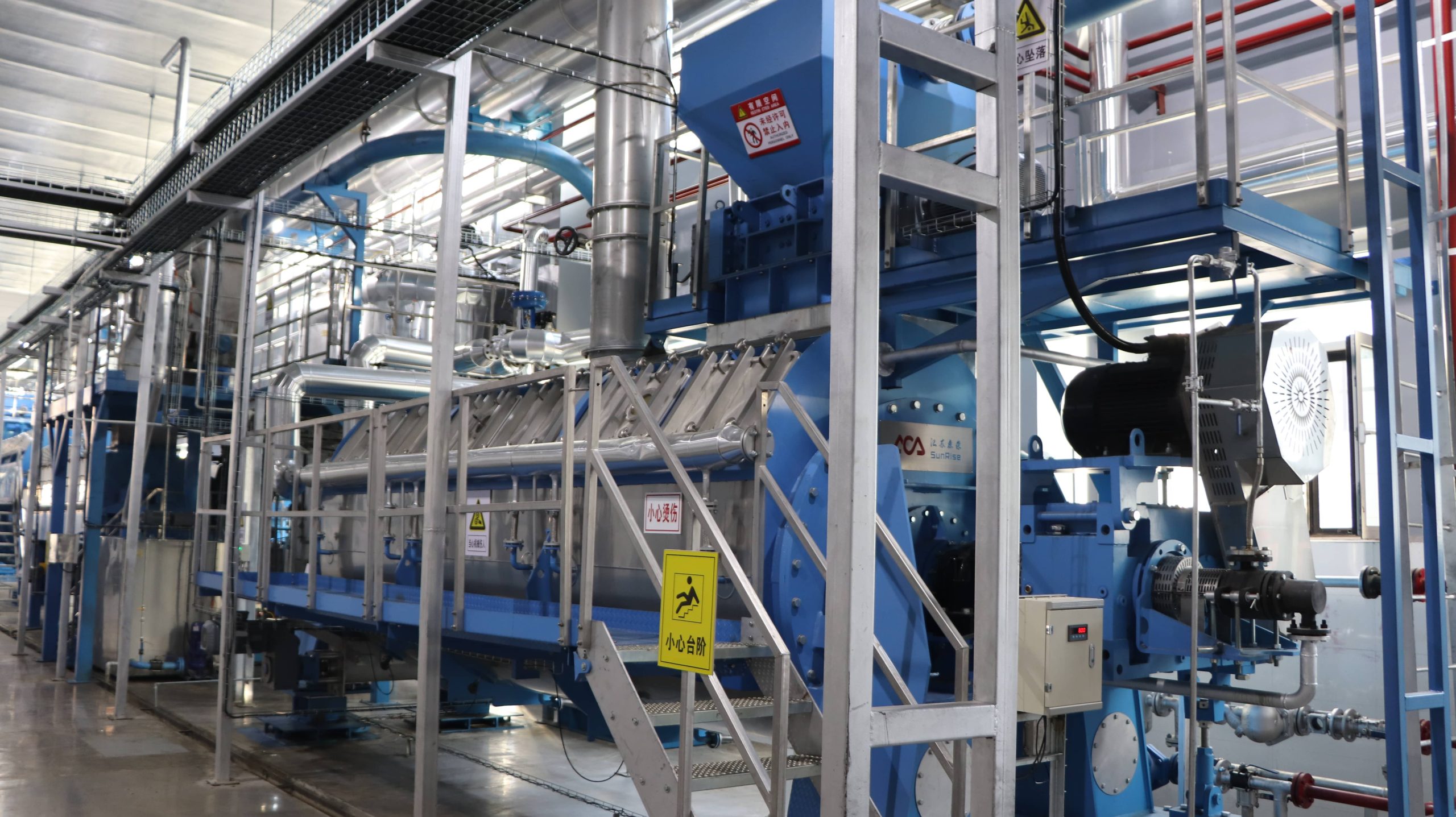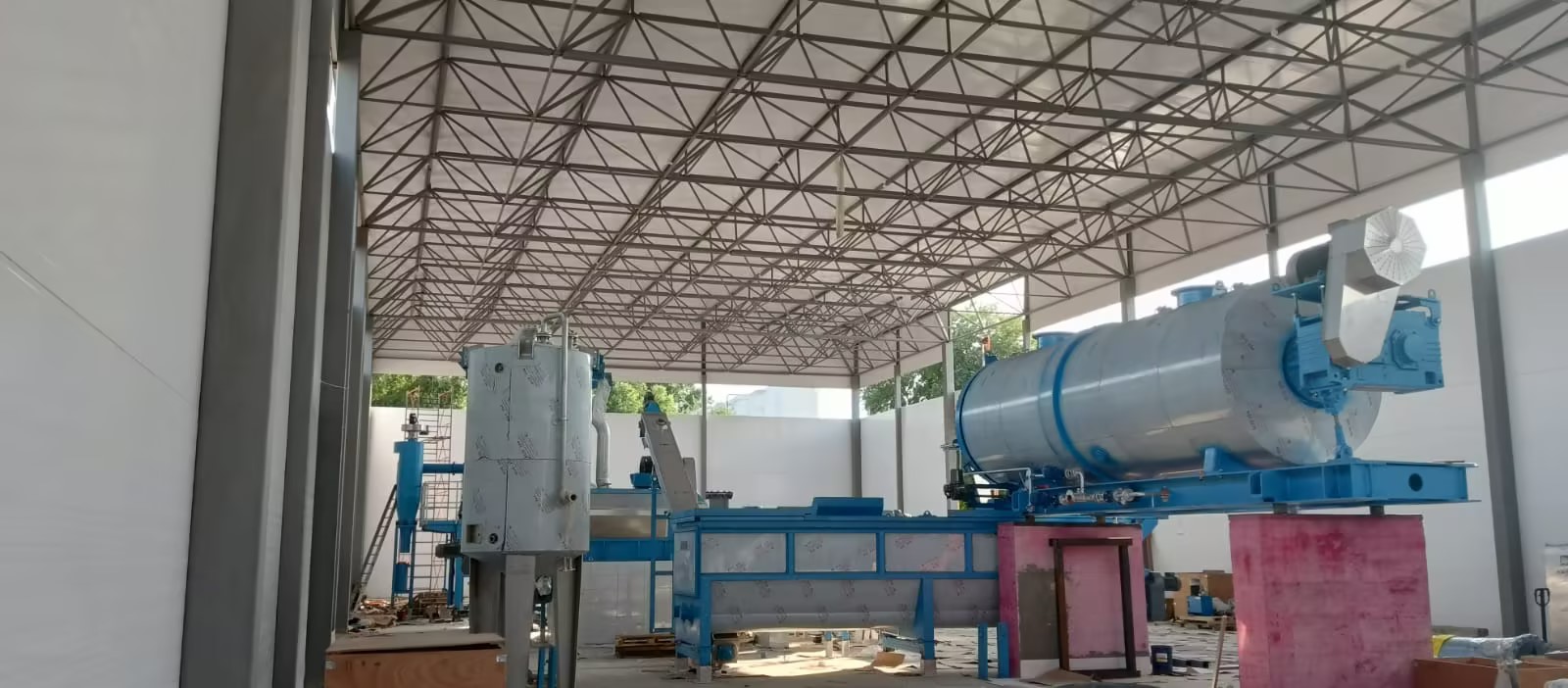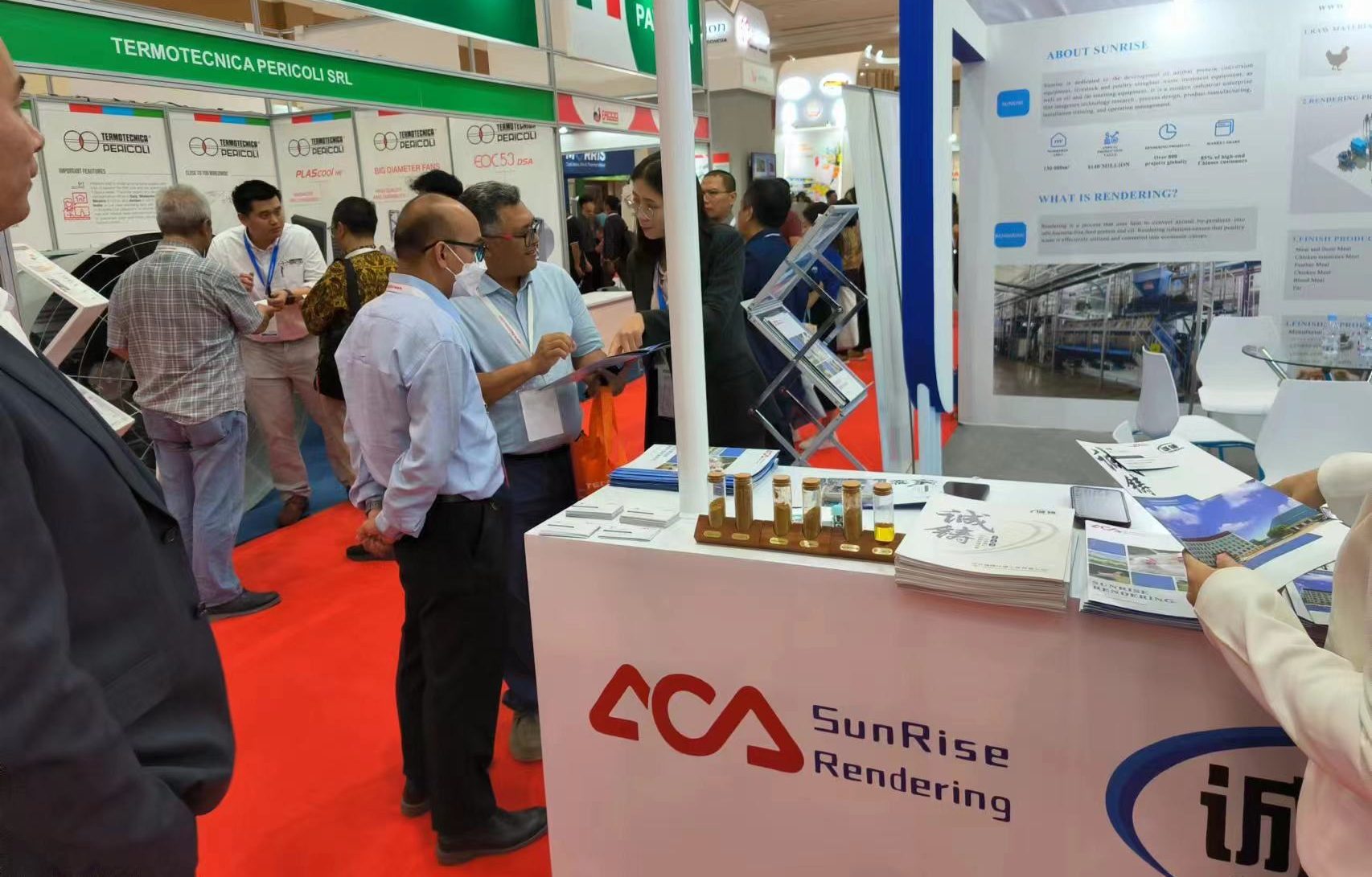
Revolutionizing Rendering Plants: The Advanced Rendering Plant Machine
Revolutionizing Rendering Plants: The Advanced Rendering Plant Machine
A Rendering Plant Machine serves the purpose of processing various animal byproducts. Crafted with top-notch raw materials and employing state-of-the-art technology during manufacturing, our array of Rendering Plant Machines is offered in diverse specifications to cater to the specific requirements of our clientele. We provide this exceptional Rendering Plant Machine at highly competitive prices.
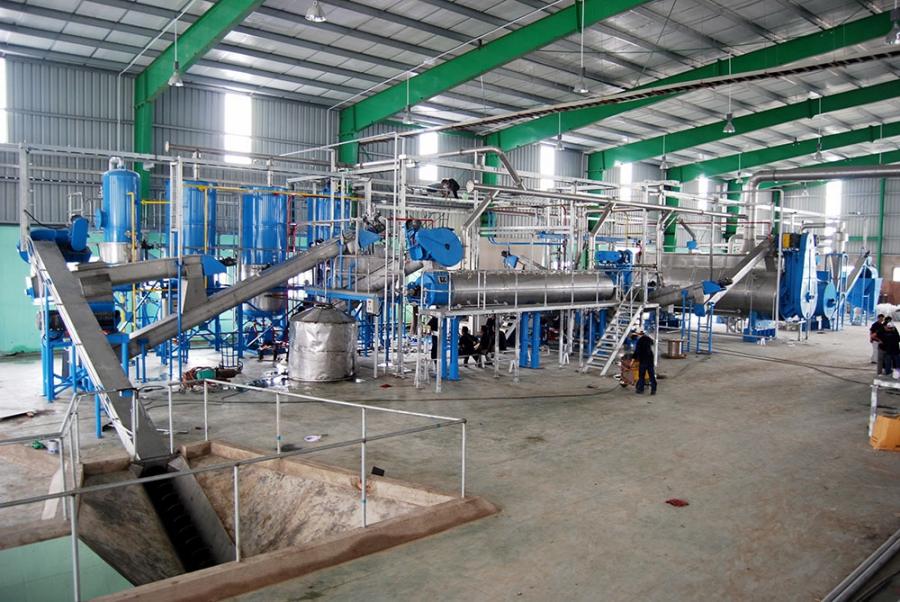
The demand for our Rendering Plant Machine is widespread across dairy farms, meat processing facilities, and various food processing units. Our machine possesses the ability to generate premium-quality products while conserving energy and incurring minimal maintenance expenses. We extend this outstanding Rendering Plant Machine to our clients at prices that lead the industry.
Redefining Rendering: A Path to Sustainability, Efficiency, and Innovation
Rendering plants play a crucial role in converting animal by-products into valuable commodities such as protein meals and fats. Nevertheless, there are compelling reasons why the rendering industry should undergo a revolution or significant improvements in its practices:
Environmental Transformation
Traditional rendering processes often result in environmental challenges, including noxious odors and greenhouse gas emissions. A rendering revolution can prioritize the development of sustainable and eco-friendly practices and technologies.
Resource Efficiency Enhancement
Although rendering is already resource-efficient, there remains untapped potential in maximizing by-product utilization and minimizing waste. Innovations hold the key to achieving even greater resource efficiency.
Forging Sustainable Protein Solutions
As the demand for alternative protein sources continues to surge, the rendering industry has the opportunity to pioneer novel methods for extracting and processing proteins from by-products, contributing significantly to the creation of sustainable protein alternatives.
Technological Revolution
The integration of state-of-the-art technologies such as automation, artificial intelligence, and data analytics can revolutionize rendering processes. This transformation promises enhanced efficiency and reduced operational costs for the industry.
Leading the Way in Rendering Plant Technology: The Advanced Rendering Plant Machine
In recent years, the rendering industry has witnessed a profound transformation, driven by cutting-edge technology and innovation. At the forefront of this revolution stands the Advanced Rendering Plant Machine—an exceptional, state-of-the-art system engineered to confront pressing challenges and usher in a new era marked by enhanced efficiency, sustainability, and product quality within the rendering process. Here are its key features and advancements:
Optimized Resource Utilization
The Advanced Rendering Plant Machine excels at maximizing the utilization of animal by-products, thereby minimizing waste and championing a circular economy. It deploys advanced separation techniques to extract every valuable ounce from raw materials.
Sustainability as a Core Tenet
Sustainability lies at the heart of this technology. It embraces eco-friendly practices, including the use of renewable energy sources and reduced water consumption, to curtail the environmental impact of rendering operations.
Resource-Efficient Drying Solutions
Distinguished by innovative drying technologies, the Advanced Rendering Plant Machine significantly reduces energy consumption and minimizes greenhouse gas emissions. This contributes to a more sustainable and energy-efficient rendering process.
Adaptive Automation and AI Integration
The system is equipped with adaptive automation and artificial intelligence, enabling autonomous operation and real-time optimization based on prevailing conditions and input variables.
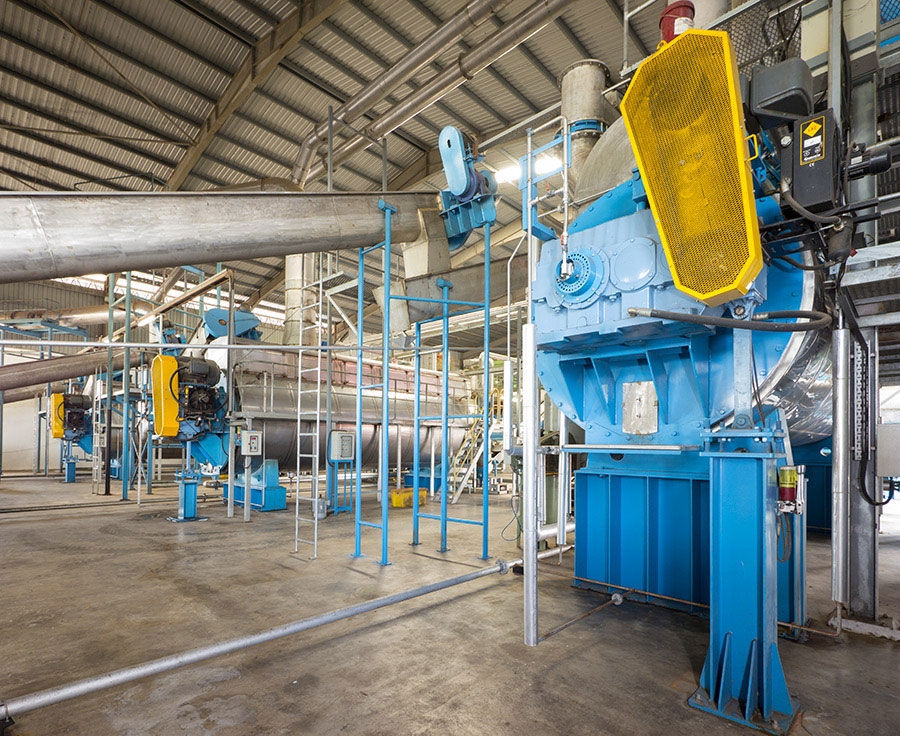
Elevating Rendering Plant Performance: Enhanced Mechanical Features for Efficiency, Safety, and Sustainability
The enhancement of mechanical features within a rendering plant is pivotal in achieving improved efficiency, safety, and environmental sustainability. Here, we explore several upgraded mechanical features that can significantly enhance the overall performance of a rendering plant.
Enhancing Rendering Efficiency: Advanced Separation and Closed-Loop Cooling Systems
Upgraded rendering plants incorporate cutting-edge separation equipment, such as high-capacity centrifuges and decanters. These innovations efficiently segregate fat, protein, and other components from raw materials, resulting in higher yields and superior-quality end products.
Closed-loop cooling systems are employed to manage and recycle process water effectively. This approach reduces water consumption and minimizes wastewater discharge, aligning rendering plants with eco-friendly practices.
Streamlining Operations: Real-Time Monitoring and Customizable Modular Design in Modern Rendering Plants
Integrated sensor systems and real-time monitoring software provide plant operators with a comprehensive overview of the production process. This real-time insight enables proactive adjustments to optimize performance and enhance product quality.
Many contemporary rendering plants adopt a modular design approach, facilitating easy scalability and customization to meet specific processing requirements and accommodate future growth.
Efficiency and Environmental Responsibility: Materials Handling Automation and Low-Noise Design in Modern Rendering Plants
Automated material handling systems, featuring robotic arms and conveyors, effectively streamline the movement of materials within the plant. This reduces the reliance on manual labor and significantly enhances operational efficiency.
The implementation of noise reduction measures, such as sound insulation and quieter equipment, fosters a more comfortable and environmentally friendly working environment for personnel.
In conclusion, these upgraded mechanical features collectively contribute to rendering plants that are more efficient, environmentally responsible, and safer. By investing in modern technologies and equipment, rendering facilities can elevate their overall performance, reduce operating costs, and meet the burgeoning demand for sustainable and high-quality rendered products.
Advancing Sustainability and Innovation in the Advanced Rendering Plant Machine
Sustainability and innovation stand as guiding principles in the development of the Advanced Rendering Plant Machine, poised to revolutionize the rendering industry into a more environmentally friendly and efficient sector. Here’s how the amalgamation of sustainability and innovation is seamlessly integrated into this groundbreaking technology:
Renewable Energy Integration
Forward-thinking rendering plants embrace renewable energy sources such as solar panels and wind turbines to power their operations. This deliberate shift reduces dependence on fossil fuels and contributes to a sustainable and diverse energy mix.
Resource Maximization
Advanced separation technologies ensure the efficient utilization of every facet of animal by-products. This meticulous approach maximizes resource utilization, minimizes waste generation, and aligns seamlessly with the principles of a circular economy.
Reduced Emissions and Odor Control
Cutting-edge filtration and odor control systems play a pivotal role in significantly reducing emissions and odors, thereby elevating the plant’s environmental performance and mitigating its impact on neighboring communities.
Smart Automation and AI
AI-driven automation takes center stage, optimizing rendering processes in real-time by fine-tuning parameters for maximum efficiency and resource utilization. This not only reduces energy consumption but also enhances overall yield.
The confluence of sustainability and innovation within the Advanced Rendering Plant Machine not only bolsters the environmental and societal impact of rendering operations but also strategically positions the industry to meet the evolving market demands centered around sustainability and responsible resource management. This groundbreaking technology marks a significant stride toward fostering a rendering industry that is not only more sustainable but also more efficient.
CONCLUSION
In summary, the Advanced Rendering Plant Machine represents a groundbreaking innovation poised to transform the rendering industry. By seamlessly merging sustainability and cutting-edge technology, this revolutionary machine not only addresses longstanding challenges but also establishes new benchmarks for efficiency, quality, and environmental responsibility.
This advanced technology not only positions rendering plants as conscientious stewards of the environment but also aligns them with the evolving demands of a market that prizes sustainability, product excellence, and transparency. As the industry increasingly adopts the Advanced Rendering Plant Machine, it is destined to usher in a new era of eco-conscious, efficient, and forward-looking rendering practices, ultimately benefiting both the industry and society at large.

